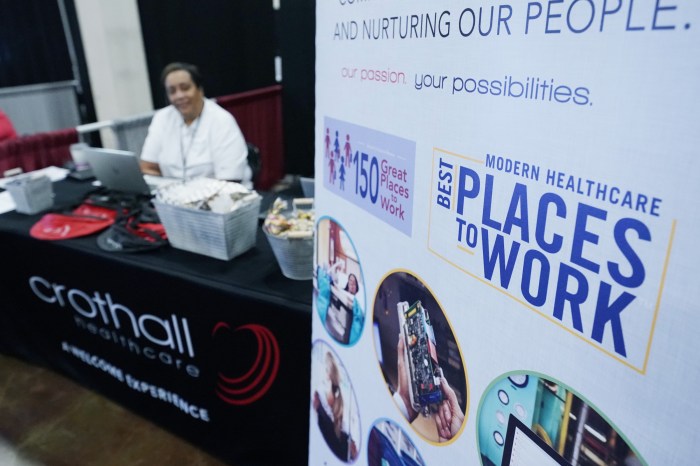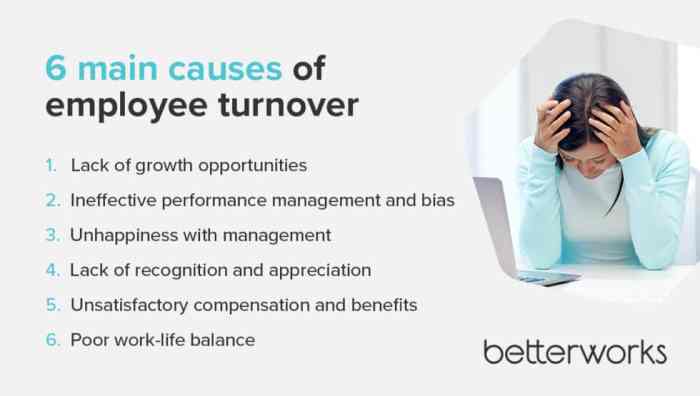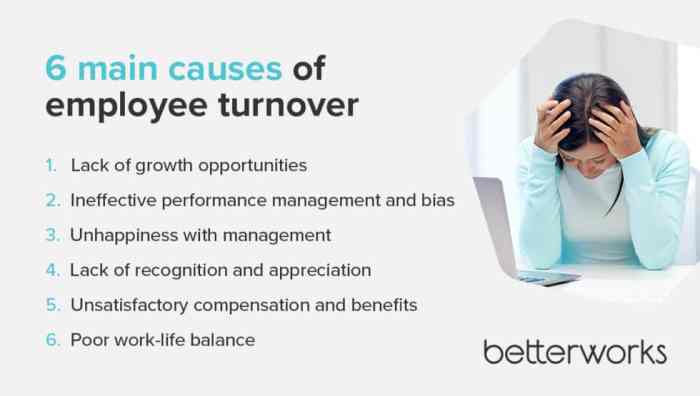Quitting is having a moment but ditching your job can be costly right now – Quitting is having a moment, but ditching your job can be costly right now. This isn’t just about the emotional rollercoaster of leaving a job; it’s a financial reality check. We’ll explore the trend of resignations, the hidden financial pitfalls of a job transition, and offer alternative strategies for improving job satisfaction without walking away entirely. The current job market’s dynamics, from navigating a competitive job search to career development, will also be analyzed.
The article delves into the multifaceted reasons behind the recent surge in resignations, considering societal pressures, psychological factors, and the historical context. We’ll unpack the financial implications of quitting, from lost income and severance packages to potential healthcare coverage disruptions. This is a crucial period for understanding the trade-offs involved, and we’ll provide a practical framework for evaluating the financial risks associated with quitting now versus waiting for a better opportunity.
Understanding the Trend
The current wave of resignations, often dubbed the “Great Resignation,” is a complex phenomenon with roots stretching back through history. While the scale and speed of this recent exodus are noteworthy, the human desire for better work-life balance and professional fulfillment isn’t new. This shift in the job market necessitates a deeper understanding of the historical context, societal factors, and psychological drivers behind this trend.The desire for a better work-life balance and professional fulfillment has always been a factor influencing job choices, though its manifestation in large-scale resignations varies across different eras.
The current context is significantly different from previous periods due to factors like heightened awareness of employee rights, the prevalence of remote work, and increased access to information about job opportunities.
Historical Context of Job Dissatisfaction
Historically, periods of job dissatisfaction have existed throughout various eras, albeit with different expressions. The industrial revolution, for example, saw significant labor unrest due to poor working conditions and low wages. However, the means of expressing that dissatisfaction differed significantly from today. Today’s workers have access to a vast network of information and resources that allow them to compare their circumstances with others and make more informed decisions about their careers.
Societal Factors Contributing to the Current Trend
Several societal factors are contributing to the current trend of quitting. The COVID-19 pandemic significantly altered work routines and expectations, pushing many to re-evaluate their priorities and career paths. Remote work became a norm, allowing individuals to seek employment opportunities that better aligned with their personal circumstances. Increased awareness of employee rights and the availability of resources like online job boards have empowered workers to actively seek better employment options.
Comparison with Previous Periods of Job Dissatisfaction, Quitting is having a moment but ditching your job can be costly right now
Compared to previous periods of job dissatisfaction, the current trend is characterized by a higher level of visibility and participation. Social media and online platforms amplify individual experiences, creating a sense of collective action and shared grievances. This visibility also allows employers to react more swiftly and adapt to changing expectations. While past periods of dissatisfaction have led to labor movements and reforms, the current speed and scale of resignations are unique.
Potential Psychological Factors Influencing the Decision to Quit
Psychological factors play a significant role in an employee’s decision to quit. Burnout, a state of emotional, physical, and mental exhaustion, is a significant concern in the modern workplace. The pressure to perform, coupled with the blurring of work-life boundaries in a remote work environment, often leads to burnout. Lack of recognition, insufficient opportunities for professional growth, and a mismatch between personal values and organizational culture are other psychological factors that might contribute to a desire to leave a job.
Common Themes or Reasons for Employees Leaving Their Jobs
Employees often leave their jobs due to a combination of factors. These factors include:
- Burnout and Stress: The constant pressure and lack of work-life balance contribute to burnout, a significant reason for quitting. The demands of the job, along with the need to be constantly available, especially in remote work settings, can significantly impact an employee’s well-being.
- Lack of Recognition and Appreciation: A lack of recognition for hard work and contributions can significantly impact job satisfaction. The absence of positive feedback or a sense of accomplishment can lead employees to seek opportunities where their efforts are valued.
- Limited Opportunities for Growth: Stagnant roles and a lack of advancement opportunities can lead to feelings of stagnation and disillusionment. The desire for professional development and career progression is a strong motivator for many employees.
- Mismatch Between Personal Values and Organizational Culture: If an employee’s personal values clash with the organizational culture, it can lead to a sense of disconnect and unhappiness. Working in an environment that doesn’t align with one’s core beliefs can be a significant factor in deciding to leave.
Financial Implications of Quitting: Quitting Is Having A Moment But Ditching Your Job Can Be Costly Right Now
Quitting your job, while potentially exciting, can have significant financial implications that need careful consideration. It’s not just about the excitement of a new opportunity; it’s about understanding the potential financial costs and planning for them. Jumping into a new role without a solid financial plan can create unnecessary stress and hinder your success.Leaving a job often involves a period of lost income, potential severance package considerations, and the possible loss of health insurance.
The financial impact of this transition can extend beyond the immediate period and affect your long-term financial stability. Understanding the potential short-term and long-term costs is crucial to making an informed decision.
Lost Income
The most obvious financial consequence of quitting is the loss of income. This period of unemployment can be financially challenging, especially if you have significant expenses. The length of time spent searching for a new position directly correlates to the total amount of lost income. For example, a job that pays $50,000 annually represents a potential loss of $4,167 per month.
This loss compounds over time, affecting savings and other financial goals.
Severance Packages
Severance packages, while not always guaranteed, can provide a financial cushion during the transition. These packages are often offered to employees in situations of job termination or company restructuring, providing a monetary benefit for their past contributions. However, the specifics of severance packages vary significantly depending on the company, the employee’s tenure, and the reason for the separation.
Healthcare Coverage Loss
Health insurance is often tied to employment. Leaving a job can lead to the loss of this critical benefit. The absence of healthcare coverage can result in significant financial burdens, particularly for those with pre-existing conditions or families. This consideration is vital to evaluate before quitting.
Potential Short-Term Impacts
The immediate financial effects of quitting a job can be substantial. Lost income directly impacts your ability to meet your monthly expenses, potentially leading to financial strain. The duration of the job search period will directly affect the length of time you will experience this impact. A longer job search means more lost income and increased financial strain.
Additional expenses related to the job search itself, such as interview attire, transportation, and application fees, will further compound the short-term impact.
Potential Long-Term Impacts
The long-term implications of quitting a job extend beyond the immediate financial consequences. The loss of employer-sponsored benefits, such as retirement contributions, can significantly affect your long-term financial security. For example, if a company matches 401k contributions, leaving your job may prevent you from taking advantage of this benefit and potentially reduce your retirement savings. Additionally, a gap in your employment history can make it more difficult to secure a position in the future, potentially impacting your future income and career progression.
Financial Risks Comparison Table
| Factor | Quitting Now | Waiting for a Better Opportunity |
|---|---|---|
| Lost Income | Potentially significant, depending on job search duration | Potentially significant, depending on job search duration and timing |
| Potential New Job Income | Unknown until a new job is secured | Unknown until a new job is secured; potentially higher based on desired opportunity |
| Job Search Costs | Ongoing costs associated with searching | Ongoing costs associated with searching |
| Savings/Assets | Potential depletion of savings to cover expenses during the transition | Potential depletion of savings to cover expenses during the transition |
Examples of Job Transition Scenarios
Different scenarios will result in varying financial implications. For example, a mid-career professional leaving a well-paying job with a robust benefits package and a short job search period may experience less severe short-term financial impacts than a recent graduate seeking their first position. Another scenario involves an employee leaving a job with limited severance packages and a lengthy job search period.
Understanding these potential scenarios is crucial to making an informed decision.
Alternatives to Quitting

Quitting a job, while sometimes necessary, isn’t always the best solution. Exploring alternatives to resignation can often lead to more positive outcomes. This approach allows you to address your concerns and potentially improve your current situation before making a drastic career change. Understanding your options within the existing framework can lead to greater job satisfaction and a more fulfilling career path.Many factors contribute to dissatisfaction at work.
Sometimes, small adjustments can significantly improve your overall experience. A proactive approach, rather than simply walking away, can be surprisingly effective in resolving issues and achieving a better work-life balance.
Potential Strategies for Improving Job Satisfaction
Improving job satisfaction requires a multi-faceted approach. Addressing concerns directly with your employer is often the first step. Open communication fosters a better understanding of your needs and allows for potential adjustments to your role or responsibilities. Consider strategies like suggesting new projects, requesting additional training, or exploring opportunities for professional development. Proactive communication can pave the way for a more fulfilling work environment.
Negotiating Better Work Conditions or Roles
Negotiating better work conditions or roles requires preparation. Clearly articulate your concerns and desired changes, backing them up with specific examples of how these changes will benefit both you and the company. Demonstrate your value to the company by highlighting past accomplishments and contributions. Consider offering solutions to current problems and showing how your ideas can improve efficiency or productivity.
Thorough preparation and a positive attitude are crucial to a successful negotiation.
Finding Support Within the Company or External Resources
Seeking support within the company or from external resources can provide valuable perspectives and guidance. Mentorship programs, employee assistance programs (EAPs), and career counseling services can offer invaluable support and strategies for navigating career challenges. Talking to colleagues or HR representatives can provide insights into company culture and potential career advancement opportunities. Leveraging these resources can lead to a clearer understanding of your situation and available options.
Step-by-Step Guide for Addressing Concerns
Addressing concerns about your current job without immediately quitting requires a structured approach. First, identify the specific concerns that are causing dissatisfaction. Next, gather supporting evidence or examples to illustrate your points. Then, schedule a meeting with your supervisor or HR representative to discuss the concerns in a professional manner. Be prepared to offer solutions or suggestions for improvement.
Document the conversation and follow up with a follow-up email summarizing the discussion and agreed-upon actions. This process allows for a constructive dialogue and potential resolution.
Potential Career Changes for a Better Work-Life Balance
Shifting careers can provide a new path towards a better work-life balance. Consider roles that offer flexible hours, remote work options, or a reduced workload. Explore industries with a reputation for supportive work environments and a healthy work-life balance. For example, roles in education, healthcare, or customer service may offer more flexible options depending on specific job roles and responsibilities.
Research different career paths that align with your skills and interests, focusing on those that provide the desired work-life balance.
Navigating the Job Market
The job market, especially during periods of high turnover, demands proactive strategies. Understanding the current landscape, developing strong connections, and crafting impactful applications are crucial for successful job hunting. This section delves into the specifics of navigating this dynamic environment.The current job market is characterized by increased competition and a significant volume of applicants for each open position.
Quitting your job feels trendy right now, but leaving a position can be surprisingly expensive, especially with the current economic climate. Fortunately, if you’re looking to upgrade your tech game, some sweet deals on gaming laptops like the Dell G3, along with tablets like the Surface Pro 7, iPads, and Samsung tablets are available at Best Buy and Amazon right now.
This is a great time to snag some awesome deals. While a new tech purchase might seem appealing, remember that jumping ship from your current role without a solid plan can be costly.
Successfully navigating this landscape requires a multifaceted approach that encompasses strategic networking, polished resume and cover letter creation, and a thorough understanding of various job search platforms.
Job Searching During High Turnover
The current job market is experiencing high turnover rates, which directly impacts the job search process. Job seekers must be prepared for a more competitive landscape, potentially requiring more applications and a more robust job search strategy. This necessitates a comprehensive understanding of the market and the skills needed to stand out. Candidates should research industry trends, identify in-demand skills, and tailor their applications to highlight those specific skills.
Networking and Building Professional Connections
Building a strong professional network is essential in today’s job market. Networking provides valuable insights into industry trends, potential job openings, and mentorship opportunities. Actively participating in industry events, joining professional organizations, and engaging with colleagues on social media platforms can significantly expand a candidate’s network. Building rapport with recruiters and hiring managers through informative conversations and thoughtful follow-up is also key.
Maintaining a professional online presence, showcasing relevant skills, and demonstrating a genuine interest in the field can attract potential employers.
Crafting Compelling Resumes and Cover Letters
Crafting effective resumes and cover letters is crucial in a competitive job market. Resumes should highlight relevant skills and experiences, showcasing accomplishments and quantifiable results whenever possible. Use action verbs and quantify achievements with metrics to demonstrate impact. Cover letters should demonstrate a clear understanding of the specific job requirements and company culture. They should highlight the candidate’s specific skills and experiences that align with the job description, showcasing how the candidate can directly contribute to the company’s goals.
Tailoring resumes and cover letters to each specific job application is vital for success.
Examples of Successful Job Applications in a Competitive Market
Numerous successful job applications in competitive markets showcase the importance of meticulous preparation. A recent example involved a candidate who tailored their resume and cover letter to highlight skills in data analysis, a highly sought-after skill in the current market. The candidate also actively networked with professionals in the field, attending industry events and leveraging LinkedIn to connect with potential employers.
Their proactive approach, combined with a strong application, led to multiple interviews and ultimately a successful job offer. Another example involves a candidate who meticulously researched a company and identified a specific problem they could solve. Their cover letter highlighted their ability to address this specific need, demonstrating their understanding of the company’s goals and their value proposition.
Job Search Platforms Comparison
| Platform | Features | Cost | Target Audience |
|---|---|---|---|
| Extensive networking, job postings, company insights, premium features | Free and paid options | Professionals across various industries | |
| Indeed | Vast job listings, applicant tracking system integration, search tools | Free and paid options | Job seekers across all levels and industries |
| Glassdoor | Company reviews, salary data, interview insights, job postings | Free and paid options | Job seekers looking for insights into company culture and compensation |
| Monster | Job postings, resume building tools, career advice | Free and paid options | Job seekers seeking comprehensive job search tools |
The table above highlights key features, cost structures, and target audiences for popular job search platforms. Careful consideration of these factors can guide job seekers toward platforms best suited to their needs and resources. Utilizing a combination of platforms can maximize exposure and opportunities.
Career Development and Transition
Navigating a career transition can feel daunting, but proactive professional development is crucial for a successful outcome. This stage isn’t just about finding a new job; it’s about enhancing your skills, identifying your strengths, and positioning yourself for a fulfilling and potentially more lucrative career path. Understanding your current value proposition and how to enhance it is key to a successful transition.A well-structured career development plan, coupled with a deep self-assessment, can significantly increase your chances of securing a desirable position that aligns with your long-term goals.
This approach empowers you to move forward confidently and strategically.
Importance of Professional Development During Transitions
Professional development is more than just taking a course; it’s a continuous process of learning, adapting, and improving your skills to meet evolving industry demands. During a job transition, this process becomes even more critical as you seek to demonstrate your value to potential employers. Staying current with industry trends and acquiring new skills can differentiate you from other candidates and provide a competitive edge.
Key Skills and Knowledge for the Current Job Market
The current job market demands a diverse skillset. Technical skills are paramount in many sectors, and strong communication and collaboration abilities are highly sought after across all industries. Adaptability, problem-solving, and critical thinking are essential traits in today’s fast-paced and dynamic environments. These skills enable individuals to effectively navigate challenges and contribute meaningfully to teams. Furthermore, the ability to learn new technologies and adapt to changing work environments is highly valued.
Strategies for Skill Development and Upskilling
Developing and enhancing your skills requires a strategic approach. Consider online courses, workshops, certifications, and mentorship programs. These resources can equip you with the knowledge and practical skills needed for success in your chosen field. Networking with professionals in your desired industry can provide valuable insights, guidance, and potential career opportunities. Participating in industry events and conferences can expose you to current trends and emerging technologies.
Creating a Personalized Career Development Plan
Developing a personalized career development plan is a crucial step in navigating your transition. This plan should Artikel your short-term and long-term career goals, identify areas needing improvement, and provide a roadmap for achieving those objectives. Include specific actions, timelines, and resources needed to reach your goals. This plan should be reviewed and adjusted as your needs and the job market evolve.
Self-Assessment in the Job Search Process
Self-assessment is fundamental to a successful job search. Understanding your strengths, weaknesses, values, and career aspirations is crucial in identifying opportunities that align with your personal and professional goals. By understanding your unique value proposition, you can tailor your resume and interview responses to highlight your relevant skills and experiences. Regular self-reflection and analysis of your performance in interviews and during the job search process are invaluable tools.
This iterative approach enables you to learn from each interaction and refine your approach for future opportunities.
Impact on Industries and Companies
The Great Resignation, a period of widespread employee departures across various sectors, has profoundly impacted industries and companies worldwide. Understanding the ripple effects of this trend is crucial for businesses to adapt and thrive in the evolving labor market. This shift necessitates a deep dive into how companies are responding and the challenges they face in a rapidly changing environment.The mass exodus of employees has created a complex interplay of challenges and opportunities for businesses.
Quitting your job feels trendy right now, but the reality is, leaving a position can be financially tricky. Especially if you’re considering a career change, understanding the current economic landscape is key. For instance, exploring potential career paths like those discussed in the fascinating analysis of the “Stephen Miller Trump dad uncle son nephew matrix” here might offer insights, but remember, making a job change is a significant decision, and doing your research and planning ahead is essential to navigate the costs involved effectively.
Companies are now navigating a landscape where talent acquisition and retention are paramount. This requires strategic adjustments in compensation, benefits, and company culture. Analyzing the specific impacts on various industries reveals a multifaceted picture, from the logistical strains in sectors like logistics to the talent shortages in high-tech.
Quitting your job feels trendy right now, but leaving a position can be financially tricky. Thinking about upgrading your phone? Learning how to switch your Apple iPhone 15 to USB-C might seem like a small tech task, but this helpful guide can help you navigate that transition smoothly. So, while a career change might be appealing, weighing the costs and benefits is crucial before you make the leap.
Impact on Specific Industries
The effects of mass resignations vary significantly across industries. Industries reliant on a highly skilled workforce, such as technology and healthcare, are often disproportionately affected. Companies in these sectors frequently struggle to find and retain qualified employees. This shortage leads to increased workload for remaining staff, impacting productivity and potentially lowering quality of service.
Strategies for Employee Retention
Companies are employing various strategies to retain employees and attract new talent. These include competitive compensation packages, flexible work arrangements, improved benefits, and a focus on employee well-being. Many companies are investing in training and development programs to enhance employee skills and career growth. Companies are also focusing on creating a more positive work environment, fostering a sense of belonging and encouraging collaboration among staff.
Challenges in Filling Open Positions
Companies face significant challenges in filling open positions, often due to a limited pool of qualified candidates. Competition for skilled workers has increased, requiring companies to implement more aggressive recruitment strategies. This often translates into increased hiring costs and extended timeframes to fill vacancies. Furthermore, attracting and retaining skilled labor may involve addressing concerns about work-life balance and career progression.
Long-Term Consequences of High Turnover
High employee turnover can have substantial long-term consequences for companies. Loss of institutional knowledge and experience can lead to decreased productivity and reduced efficiency. Maintaining continuity and streamlining processes becomes a considerable hurdle. The disruption to established workflows and procedures can also negatively affect project timelines and profitability. A loss of experienced staff also means loss of valuable customer relationships and brand reputation.
Examples of Industries Particularly Affected
Several industries are experiencing significant challenges due to the current trend. The technology sector, known for its rapid innovation and demanding work environment, faces intense competition for top talent. The hospitality industry, often characterized by seasonal fluctuations and high employee turnover, is particularly vulnerable to the current labor market pressures. Similarly, healthcare professionals are in high demand, and retention challenges in this sector are often exacerbated by long hours and demanding work conditions.
Furthermore, the logistics and supply chain industry is also struggling to maintain consistent operations due to the shortage of skilled workers in transportation and warehousing.
The Future of Work
The modern job market is in constant flux, driven by technological advancements, evolving societal needs, and global economic shifts. Understanding the long-term implications of these trends is crucial for individuals navigating their careers and for businesses adapting to the changing landscape. This exploration delves into the anticipated future of work, emphasizing the importance of adaptability and flexibility.The future of work is not a singular destination, but a dynamic journey shaped by ongoing innovation and societal adjustments.
The traditional 9-to-5 model is likely to continue evolving, with hybrid work arrangements becoming the norm for many industries. This shift necessitates a reassessment of traditional work culture and expectations.
Long-Term Implications of Current Trends
The current job market is marked by a growing demand for specialized skills, particularly in technology and data-driven fields. Automation is transforming many industries, leading to a decrease in demand for routine tasks while simultaneously creating opportunities for roles that involve complex problem-solving and human interaction. This requires continuous learning and upskilling to remain competitive.
Forecast for the Future of Work and Employment
The future of work will likely see a blend of remote and in-person work, with companies adopting hybrid models to cater to diverse employee preferences and operational needs. The demand for digital literacy and skills in emerging technologies will remain high. Furthermore, the gig economy is projected to continue growing, offering greater flexibility but potentially posing challenges regarding employee benefits and job security.
Potential Shifts in Work Culture and Expectations
The future work culture is likely to be more collaborative, adaptable, and focused on employee well-being. Increased emphasis on work-life balance and mental health will be paramount. Organizations are likely to place greater value on employees’ ability to adapt to change and contribute innovative solutions. Moreover, transparent communication and open feedback loops will be essential for maintaining a productive and engaged workforce.
Importance of Flexibility and Adaptability in the Modern Workforce
Adaptability and flexibility are becoming paramount in the modern workforce. The ability to quickly learn new skills, embrace change, and adapt to evolving roles will be crucial for career longevity. Employees need to proactively develop new skills and competencies to remain relevant in a rapidly changing landscape. Continuous learning and development will be key to success.
Examples of Emerging Job Roles and Industries
The future workforce will require specialized skills in emerging fields like artificial intelligence, machine learning, and data science. Additionally, roles related to sustainable practices, user experience design, and virtual reality will be in high demand. Furthermore, roles focusing on customer experience and personalized services will continue to gain importance as businesses prioritize customer satisfaction. This evolution necessitates a shift in educational curriculums to equip future generations with the relevant skills needed for success in these emerging industries.
- AI-related roles: Machine learning engineers, AI ethicists, and AI-driven business analysts.
- Data-driven roles: Data scientists, data analysts, and business intelligence specialists.
- Sustainability-focused roles: Environmental consultants, sustainable product designers, and green energy specialists.
- Emerging Technologies: Cybersecurity specialists, blockchain engineers, and quantum computing professionals.
End of Discussion

Quitting is a complex decision, and while the current trend highlights a need for reassessment, it’s crucial to weigh the financial and personal costs. This exploration offers a comprehensive understanding of the factors influencing the decision to leave, the potential financial consequences, and practical strategies for navigating the job market. We’ve covered the reasons behind the surge in resignations, the financial repercussions, alternatives to quitting, and the realities of job searching.
Ultimately, the goal is to empower individuals with the knowledge and tools to make informed choices about their careers, recognizing that there are often more options than just quitting.




